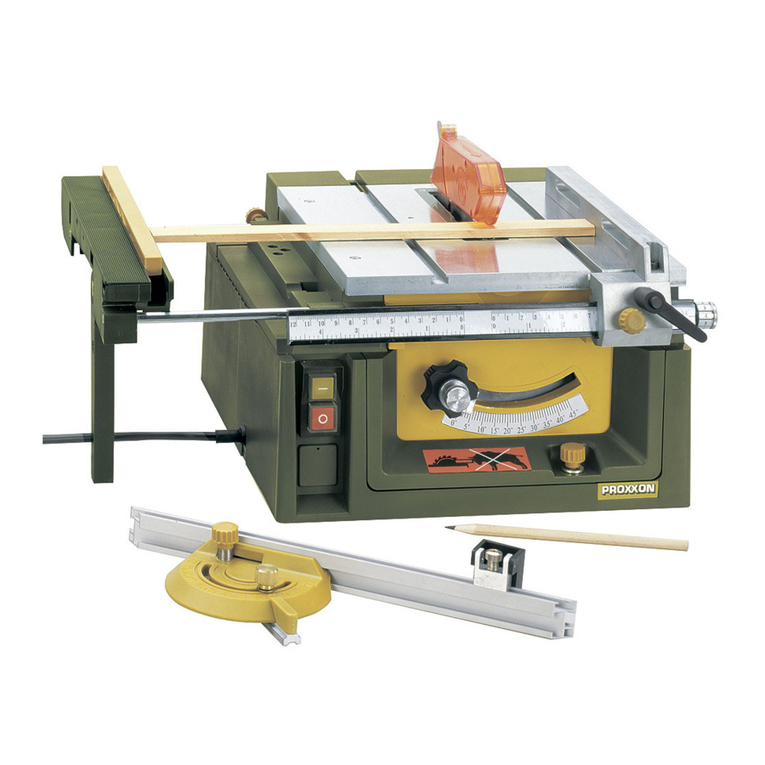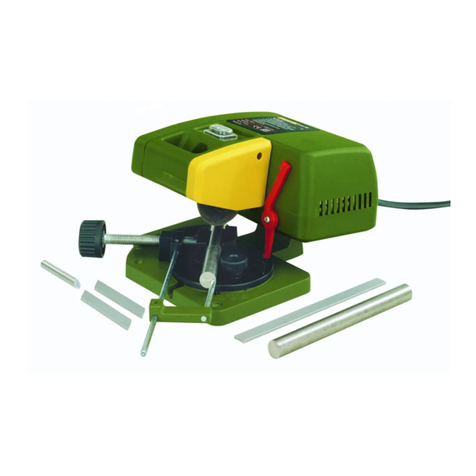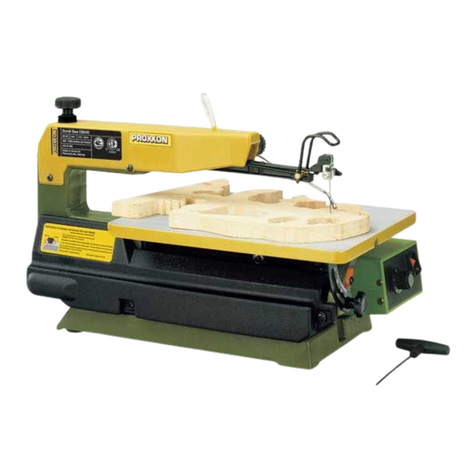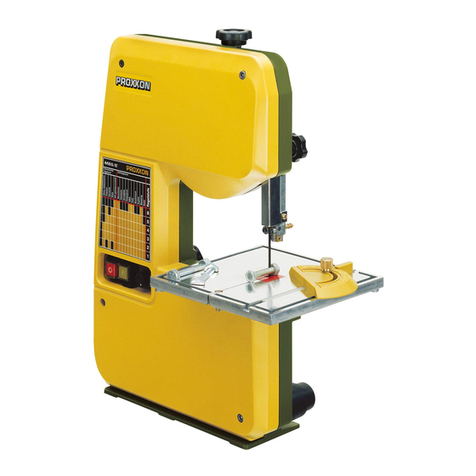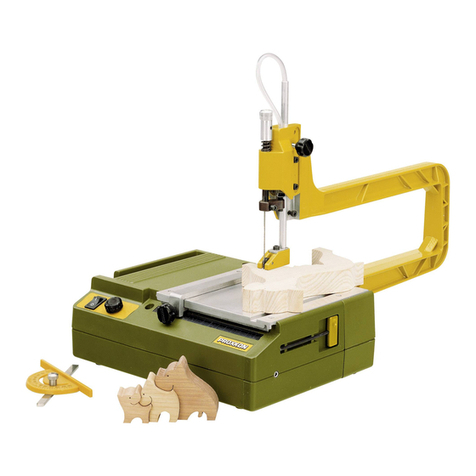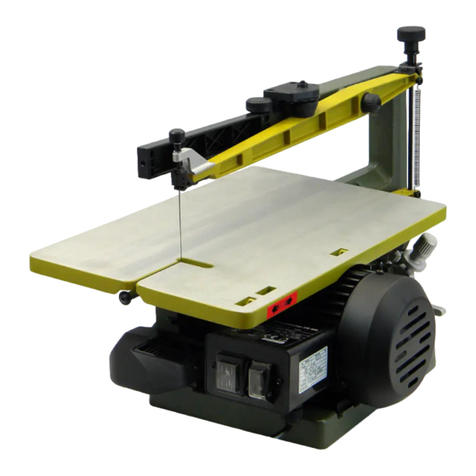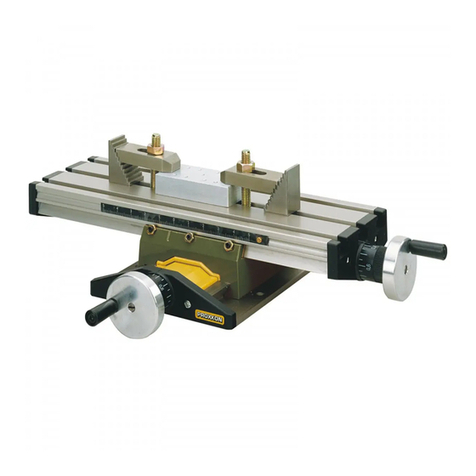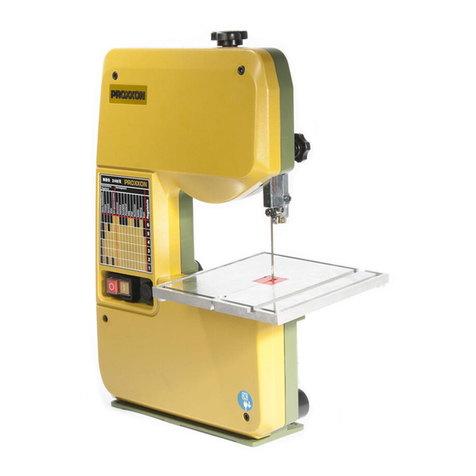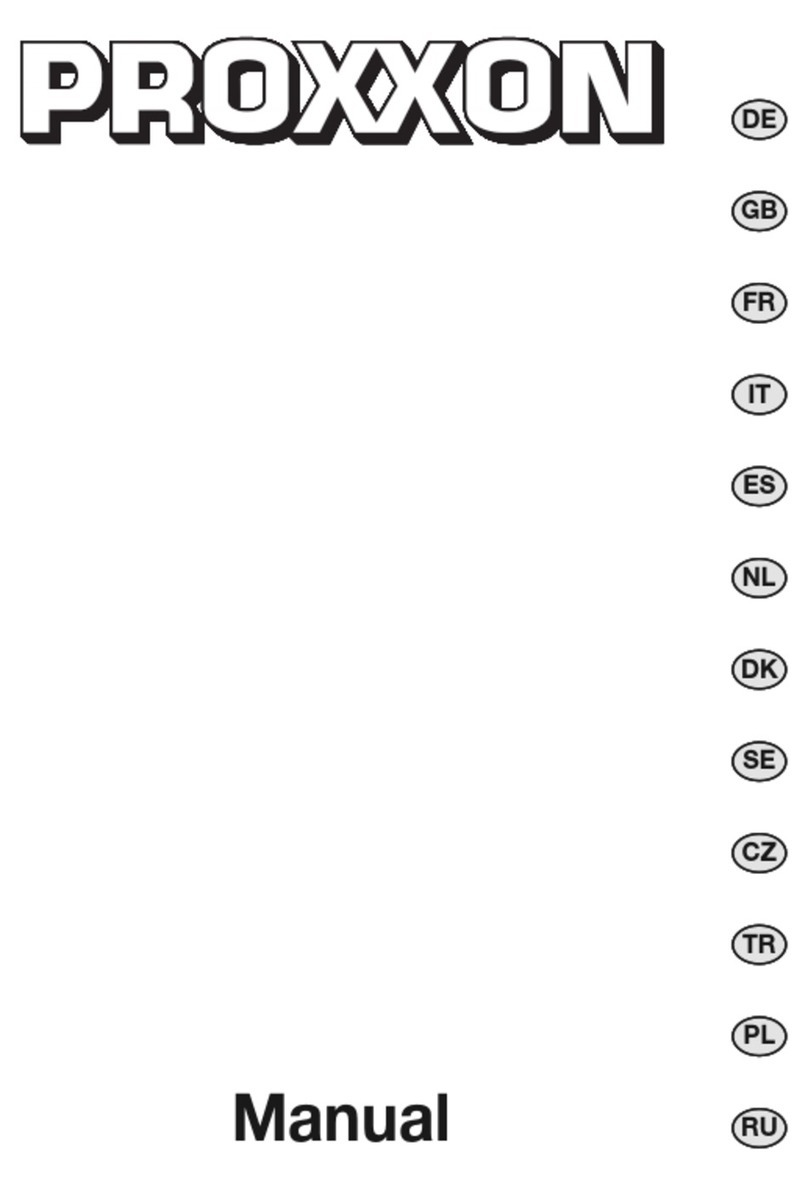•Wear hearing protection! Exposure to noise can cause hear-
ing loss! Make sure that the machine and its accessory
parts are in technically perfect condition! Only the above
establishes the optimal conditions for noisereduction. In
particular,make sure that the saw blade is neither dull nor
damaged. Worn or damaged saw blades have anegative
effect on noise generation and also pose asafety risk! You
can minimize noise generation by adjusting the work piece
feed to the requirements of material and saw blade.
•Saw dust from certain materials can be hazardous to your
health if inhaled or if it touches your skin. For that reason,
always wear appropriate protective clothing (e.g. respirator)
and always work with the suction device. Attention: Dust in
certain concentrations can generate an explosive mixture in
the air!
•Make sure your mains plug has aprotective earthing
conductor and is suitable to operate the device!
2.2 Safety guidelines regarding protective covers
a) Leave the protecting covers assembled. Protecting
covers must be functional and assembled correctly.
Loose, damaged or improperly functioning protecting cov-
ers must be repaired or replaced.
b) For separating cuts, always use the saw blade pro-
tecting cover and the splitting wedge. For separating
cuts where the saw blade cuts through the entire work
piece thickness, the protecting cover and other safety
mechanisms reduce the risk of injuries.
c) Once you have completed your operating procedure
(e.g. groove, back-gouge or separating in reversal
method) which requires the removal of protecting cov-
ers, splittingwedge and/or kickback protection, imme-
diately reinstall the protective system. The protecting
cover,the splitting wedge and the kickback protection
reduce the risk of injuries.
d) Before switching on the power tool, make sure the saw
bladedoes not touch the protecting cover,the splitting
wedge or the work piece.Unintentional contact of these
components with the saw blade can lead to adangerous
situation.
e) Adjust the splitting wedge according to the description
in these operating instructions. Incorrect distances,
position and alignment could be the reason why the split-
ting wedge does not effectively prevent kickback.
f) The splitting wedge and anti-kickback device need to
act on the work piece in order to function. The splitting
wedge and anti-kickback device are ineffective for work
piece sections which are too short for the splitting wedge to
act upon. The splitting wedge and the anti-kickback device
cannot prevent kickback under these conditions.
g) Use the appropriate saw blade for the splitting wedge.
For the splitting wedge to act correctly,the saw blade diam-
eter must match the corresponding splitting wedge, the
steel blade of the saw blade must be thinner than the split-
ting wedge, and the tooth width must be greater than the
splitting wedge thickness.
2.3 Safety guidelines for sawing process
a) DANGER: Your fingers and hands should not come
near the saw blade or within the sawing range. A
moment of carelessness or slipping could direct your hand
towards the saw blade and result in serious injuries.
b) Always guide the work piece against the direction of
rotation of the saw blade. Feeding the work piece in the
same direction as the direction of rotation of the saw blade
above the table can cause the work piece and your hand to
be drawn into the saw blade.
c) Never use the mitre stop to feed the work piece for
long sections, and for cross sections with the mitre
stop, never use the parallel limit stop additionally to
the longitudinal adjustment. Guiding the work piece
simultaneously with the parallel limit stop and the mitre
stop increases the probability that the saw blade will jam
and kickback.
d) For long sections, always exert the feeding force on
the work piece between stop rail and saw blade. Use a
push rod when the distancebetween stop rail and saw
blade is less than 150 mm; use apush block when the
distance is less than 50 mm. Such working aids ensure
that your hand remains at asafe distance to the saw blade.
e) Use only the supplied push rod of the manufacturer,or
one that has been manufactured according to instruc-
tion. The push rod ensures asufficient distance between
hand and saw blade.
f) Never use adamaged or partially cut pushing rod. A
damaged pushing rod can break and cause your hand to
come against the saw blade.
g) Do not work “freehand”. Always use the parallel limit
stop or the mitre stop to position and guide the work
piece. “Freehand” means supporting or guiding the work
piece with the hands instead of with the parallel limit stop
or the mitre stop. Freehand sawing leads to misalignment,
jamming and kickback.
h) Never reach around or over arotating saw blade.
Reaching for awork piece can result in unintentionally
touching the rotating saw blade.
i) Support long and/or wide work pieces behind and/or to
the side of the saw table so they stay horizontal. Long
and/or wide work pieces tend to tilt down at the end of the
saw table; this leads to loss of control, jamming of the saw
blade and kickback.
j)
Guide the work piece evenly.Donot bend or twist the
work piece. If the saw blade jams, immediately shut off
the power tool, disconnect the mains plug and eliminate
the cause of jamming. Awork piece which has jammed the
saw blade can lead to kickback or to blocking of the motor.
k)
Do not remove sawn off material whilst the saw is still
operating. Sawn offmaterial can become fixed between saw
blade and stop rail or in the protecting cover and will pull your
fingersinto the saw blade if you attempt to remove the mate-
rial.Switch offthe saw and wait until the saw blade has come
to acomplete standstill before you remove the material.
18
